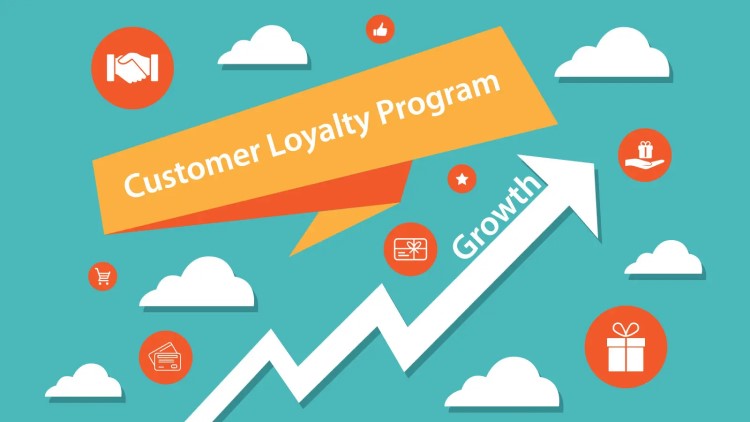
Types of Customer Loyalty Programs
Customer loyalty programs come in various forms, each designed to engage customers and encourage repeat purchases. A common model is the points-based system, where customers earn points with each purchase. These points can later be redeemed for rewards, such as discounts or free products. This approach is simple and widely used, making it effective for fostering regular purchases.
Tiered loyalty programs offer a more structured model, rewarding customers based on their spending levels. As customers move up tiers, they unlock greater benefits. This method motivates higher spending while making customers feel valued as they progress through different levels.
Paid loyalty programs, on the other hand, require an upfront fee for exclusive benefits. These perks may include free shipping, discounts, or access to premium products. Although paid programs ask for a commitment, the perceived value often leads to increased customer retention. Understanding these types of customer loyalty programs allows businesses to choose the right model for their audience, enhancing long-term engagement.
Psychology Behind Customer Loyalty
Understanding the psychology behind customer loyalty is key to designing effective customer loyalty programs. People are naturally driven by rewards and recognition, which taps into their desire for status and appreciation. Loyalty programs that offer personalized rewards or exclusive benefits foster a sense of belonging, making customers feel valued.
Additionally, consumers are motivated by convenience. If your program simplifies decision-making and offers immediate, tangible benefits, it can increase customer satisfaction and retention. For example, customers who see the direct benefits of accumulating points or advancing tiers are more likely to stay engaged with your brand.
Emotional connection also plays a significant role in loyalty. When customers feel that a brand understands their needs and consistently delivers value, they are more inclined to remain loyal. By understanding these behavioral motivators, you can structure your customer loyalty programs to enhance both engagement and long-term success.
The Impact of Customer Retention on Business Growth
Customer retention is a key driver of business growth, and customer loyalty programs are a powerful tool to achieve this. When customers are consistently rewarded for their repeat purchases, they tend to return more frequently. This ongoing relationship fosters not only higher sales but also long-term loyalty, which reduces the cost of acquiring new customers.
Loyalty programs offer businesses a way to build deeper connections with their audience, turning one-time buyers into regular patrons. The more engaged your customers are, the more likely they are to recommend your brand to others, expanding your customer base organically. This positive cycle of repeat business and referrals ultimately fuels steady growth.
Moreover, customer loyalty programs help businesses stabilize their revenue streams by encouraging consistent spending. By offering rewards and incentives, you create a framework where customers see added value in continuing their relationship with your brand. This long-term retention strategy supports sustainable business growth while building a loyal customer community.
Measuring the ROI of Loyalty Programs
Measuring the ROI of customer loyalty programs is essential to understanding their financial impact. Key metrics include customer lifetime value (CLV), which tracks the total revenue a customer generates over their relationship with your business. A higher CLV often indicates a successful loyalty program that encourages repeat purchases.
Another important metric is the customer retention rate. This measures how many customers remain engaged with your brand after joining your loyalty program. A higher retention rate suggests that your program is effectively encouraging loyalty and long-term engagement, contributing to sustainable revenue growth.
Additionally, tracking the redemption rate of rewards gives insight into customer participation. A low redemption rate may indicate that your rewards are not enticing enough, while a high rate shows strong engagement. By monitoring these metrics, you can assess the financial effectiveness of your customer loyalty programs and make necessary adjustments to improve their impact.
Challenges and Pitfalls in Managing Loyalty Programs
Managing customer loyalty programs presents several challenges that businesses must address to succeed. One common issue is maintaining customer interest. If rewards become predictable or difficult to attain, customers may lose motivation. To overcome this, you can offer personalized rewards and regularly refresh the offerings to keep participants engaged.
Another challenge is balancing costs with program benefits. Running a loyalty program requires resources, and if not managed well, the cost can outweigh the return. To address this, you should closely monitor key metrics, such as redemption rates and customer retention, ensuring that the program delivers value without overextending your budget.
Additionally, preventing fraud and misuse of customer loyalty programs can be difficult. Some customers may find loopholes to gain unearned rewards, which can harm profitability. Implementing secure systems and regularly auditing program activities can reduce such risks, ensuring that only loyal customers benefit from the program. By addressing these challenges, you can create a more effective and sustainable loyalty program.
Adapting Loyalty Programs to Changing Consumer Trends
To keep customer loyalty programs relevant, companies must adapt them to reflect changing consumer trends. As preferences shift, you should regularly evaluate your program’s offerings. For example, modern consumers often value personalized rewards and experiences over generic incentives. Incorporating personalized rewards can strengthen engagement and retention.
Another way to stay relevant is by embracing technology. Consumers expect convenience, so integrating digital platforms into your customer loyalty programs can improve accessibility. Mobile apps and digital wallets, for instance, simplify reward tracking and redemption. This not only enhances the customer experience but also makes it easier for you to collect valuable data on user preferences.
In addition, sustainability has become a growing concern for many consumers. By adapting your loyalty programs to offer eco-friendly rewards or support social causes, you align with customers’ values. This approach can strengthen emotional connections, making customers more likely to remain loyal over time. Keeping up with these evolving trends helps your program remain competitive and attractive to customers.
Conclusion
Customer loyalty programs play a key role in retaining customers and driving long-term growth. As your business evolves, so should your loyalty strategies. Regularly updating your programs to align with consumer trends will keep them relevant and engaging. By focusing on personalization, convenience, and sustainability, you create a meaningful connection with your customers. These efforts help ensure that loyalty programs continue to offer value for both you and your customers. When done effectively, customer loyalty programs can enhance satisfaction, foster brand loyalty, and contribute to sustained success.


